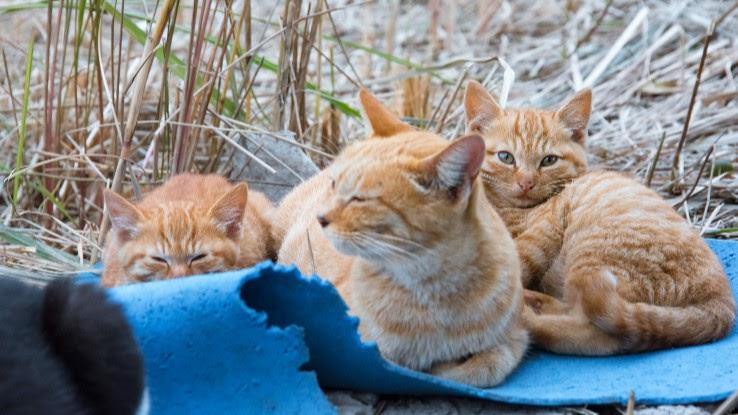
Japan is known for things like sushi, Nintendo and tea ceremonies. However, it’s also renowned for its love of cats. The country not only has cat cafés, but also several islands populated entirely by felines.
These amazing islands sometimes have boat docks and other manmade structures, but they always have tons of cats. If you’ve ever been to an animal shelter to visit cats and thought, “I want this, but more,” then these cat islands are for you.
There Are Eleven Cat Islands
While westerners often talk as if Japan only has one cat island, there are actually more than 10 spread throughout the country. Japan itself is an archipelago made up of 6,852 islands of various sizes, so islands for cats aren’t in short supply.
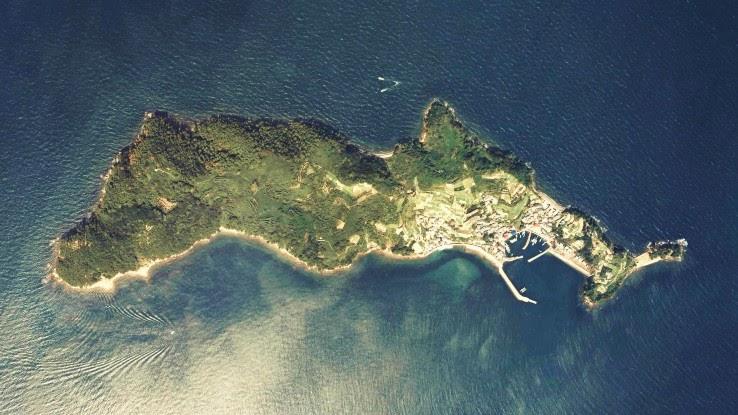
These islands are located both offshore and in lakes. The most well-known of these cat islands is Aoshima in Ehime prefecture. The other cat islands are spread throughout Fukuoka, Yamaguchi, Miyagi and Kagawa Prefectures.
Aoshima: The Most Famous Cat Island
When it comes to Cat Island, most people think of Aoshima. This island was the first to be called Cat Island and today still lives up to the name with over 120 cats but only 15 to 20 human residents.
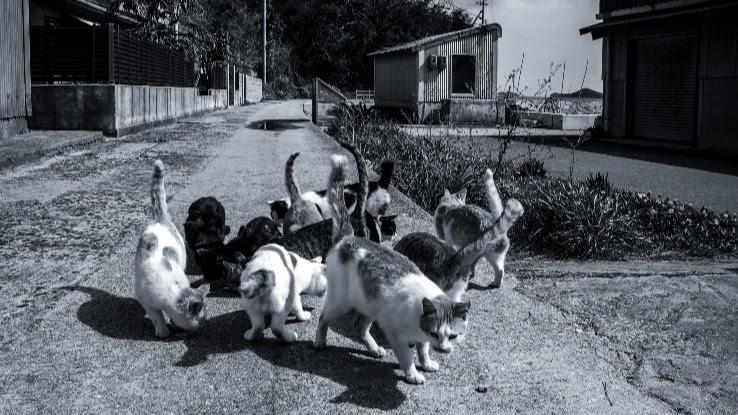
The island itself is 1.6km long. The reason cats first made it to the island is because of fishermen who wanted to deal with the local rodent problem. However, after the rats were gone, the cats stayed and had a population boom.
Aoshima: Not Made for Tourists
Due to the advanced age of the residents, Aoshima is not a tourist-friendly destination. There are no hotels, restaurants, or even vending machines to provide tourists with food, lodging or souvenirs.
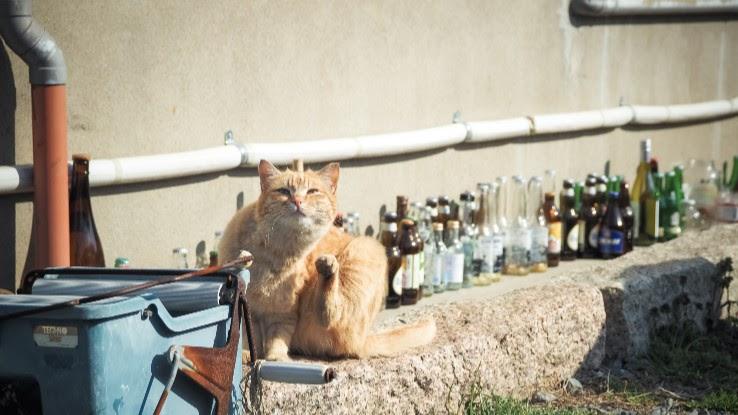
If you do decide to visit the island, it’s important to bring your food, water and a healthy supply of cat treats for all the felines. A ferry travels to Aoshima twice a day. However, because of the island’s growing popularity, tickets often sell out hours beforehand.
Aoshima: Why There Are So Few Humans
380 years ago, people from nearby Hyogo Prefecture were attracted to Aoshima for its abundance of sardines. More fled to the island after World War II. So why do so few people live on Aoshima today?
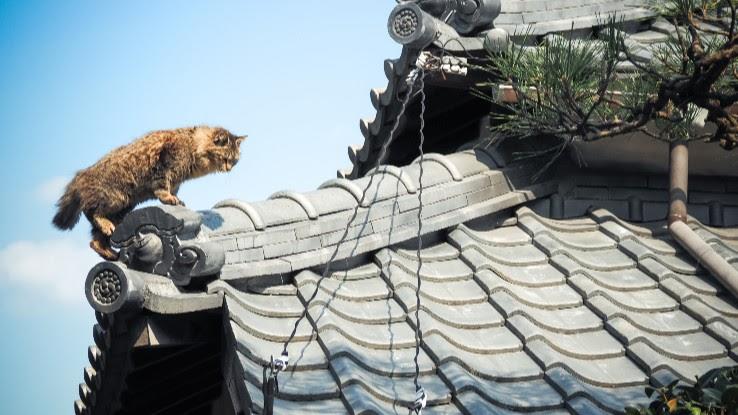
After the war was over, the youngest residents of the island left to find work elsewhere. The rest who remained were on the older side – most retirees – and didn’t need or want to leave. As they’ve aged, the population has dwindled, and no new people have come to take their place.
Aoshima: Internet Charity
At one point, the island of Aoshima was struggling to provide enough food for its cats. The people there posted an open cry for help on the internet. One of the cat caretakers took to Twitter to voice the need for supplies and goods to care for the cats.
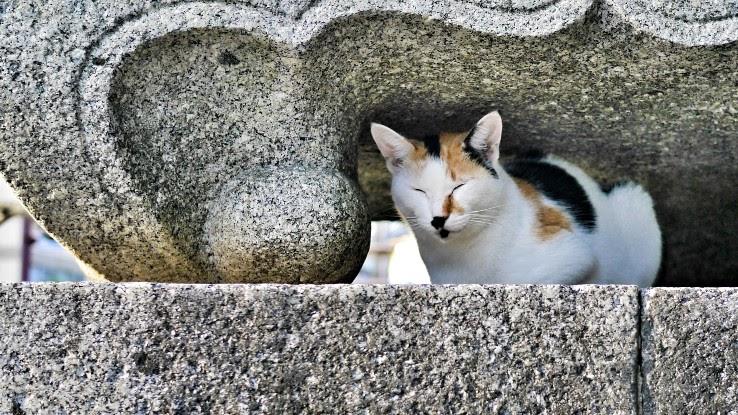
In typical internet form, the post exploded, and supplies began rolling in. At first, the caretakers expressed their gratitude, thanking people for their generosity. However, within five days, they began begging for people to stop sending supplies because there was no more room for storage.
Aoshima: The Cat Witch
Some tourists to Aoshima have described a cat witch taking care of the cats there. Before you get too excited, however, this woman doesn’t seem to practice adorable cat sorcery — she simply feeds the cats.
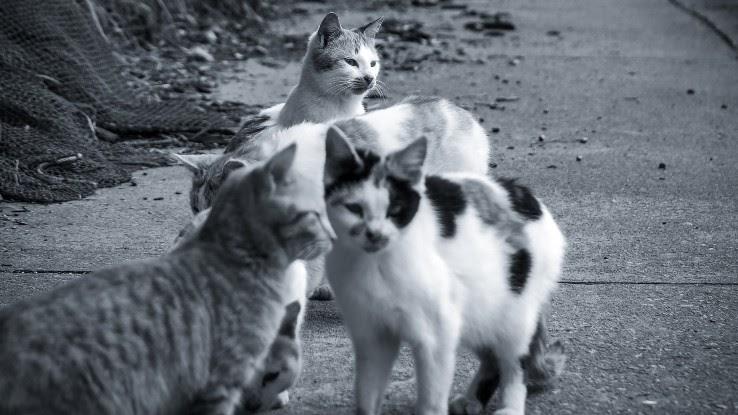
So what do the cats eat when they’re not receiving magical morsels from the resident witch or internet handouts? Potatoes, energy bars, rice balls and anything else the cats can scavenge from tourists are all fair game, as there are few natural food sources left on the island.
Aoshima: Overpopulation
Because the cats of Aoshima and many other cat islands face no natural predators, overpopulation and the starvation and disease that come with it are a real problem. The only real solution is to lower the number of cats on the island.
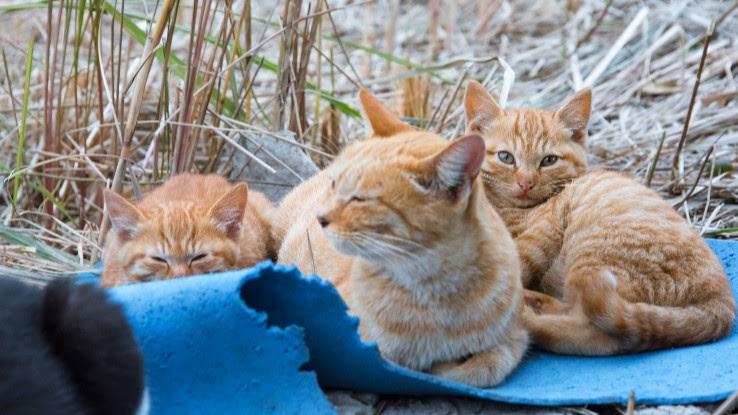
The Aoshima Cat Protection Society suggested spaying or neutering the cats as a solution. The idea is to gradually reduce the cat population to a more manageable number. The proposed plan is expected to cost $3,640 to bring vets to the island for the procedures.
Tashiro-Jima: The Second Biggest Cat Island
The second-largest cat island in Japan is called Tashiro-Jima. Located in Miyagi Prefecture, the human population is around 100, while there’s a bit over that number in cats. The original business on the island was raising silkworms to produce silk.
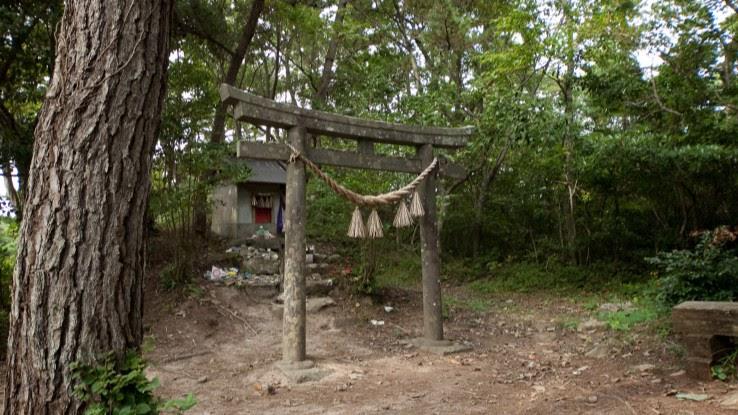
Rats began to be a problem because of the silk, so cats were brought in to deal with them and protect the business. While the silkworms are now gone, the locals believe that feeding the cats brings good fortune. The felines continue to be well treated and fed.
Tashiro-Jima: The Cat Shrine
Part of the reason why Tashiro-Jima’s population was able to grow so big was the fishermen who fed and protected the cats for good luck. They even built a shrine to one poor cat that was killed by a falling stone. It lies between the villages of Odomari and Nitoda.
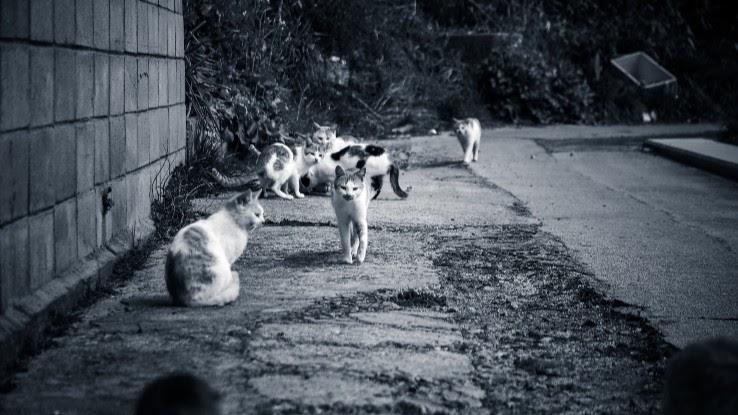
You could argue, however, that the island’s real cat shrine is Kamabutsu Shoten, the only store on the island and a favorite gathering place for many of the local cats. They probably know they can count on tourists buying provisions to show them a little love.
Enoshima: The Cat Island Closest to Tokyo
For those who are visiting Tokyo and want a chance to visit an island full of cats, Enoshima is your best bet. This small island is only 4 kilometers in circumference and is located right offshore of southwest Tokyo in Kanagawa Prefecture.
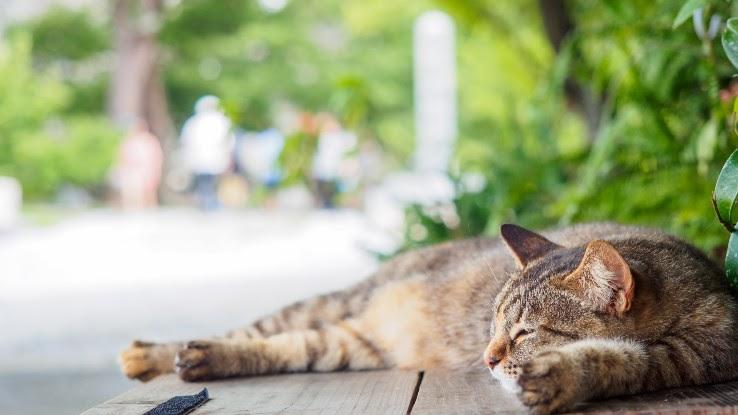
The original cat population was abandoned on the island, but now they are carefully cared for by residents and visitors. All of the felines are treated as communally owned cats, so they’re very social. Beware: if you come bearing snacks, you will have a small army of cats that expect you to share with them.
Manabeshima: An Isolated Cat Island
Manabeshima (“-shima” meaning island, in case you didn’t notice) is another cat island. However, this island is smaller than either Aoshima or Tashiro-Jima. It’s located in Kasaoka City in the Okayama Prefecture. This island is a bit more isolated than the other cat islands and requires both train and ferry to reach it.
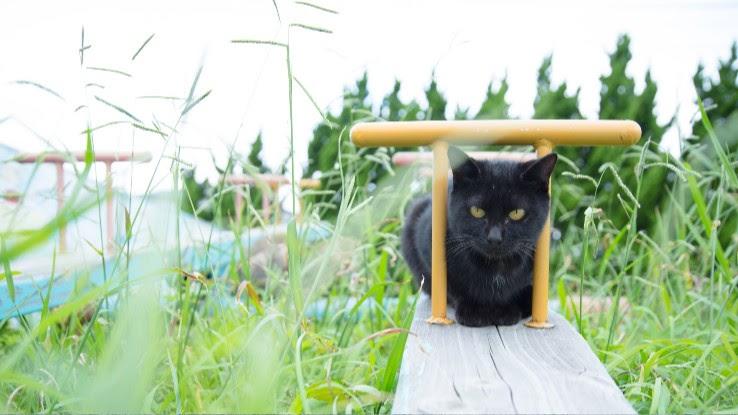
Back when the island only had a population of around 300, it became famous thanks to French artist Florent Chavouet. Eventually, as the cat population exploded, the felines began to outnumber the humans. Now no matter where you roam on the island, there are friendly cats.
Okishima: Freshwater Cat Island
While most of the cat islands are on the ocean, there are several in the middle of freshwater lakes. Okishima is in the middle of Lake Biwa, which is Japan’s largest freshwater depository. The residents supposedly descend from seven samurai families who were exiled there centuries ago.
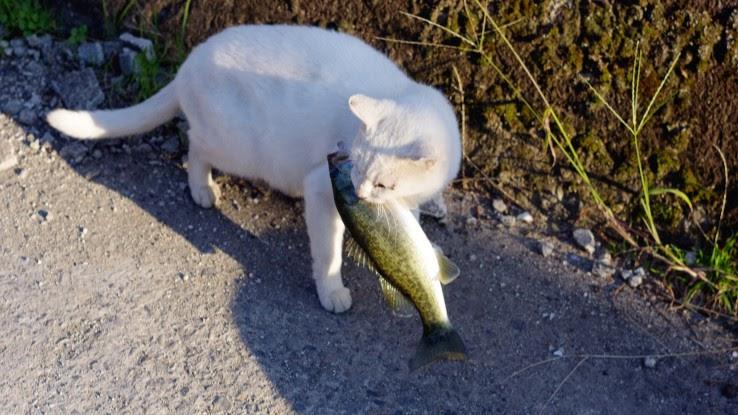
Today, the human residents number around 350. Due to the island being so small, this fishing community uses bicycles as the main mode of transportation rather than motorized vehicles. Due to the lack of cars, it’s much easier for the felines to roam around the island without fear of being hurt.
Okishima: Land of Cat Plenty
Unlike Aoshima, Enoshima has plenty of people for cats to mooch from as well as natural food sources. There are plenty of birds on the island, and the human population no doubt sustains at least some rodents.
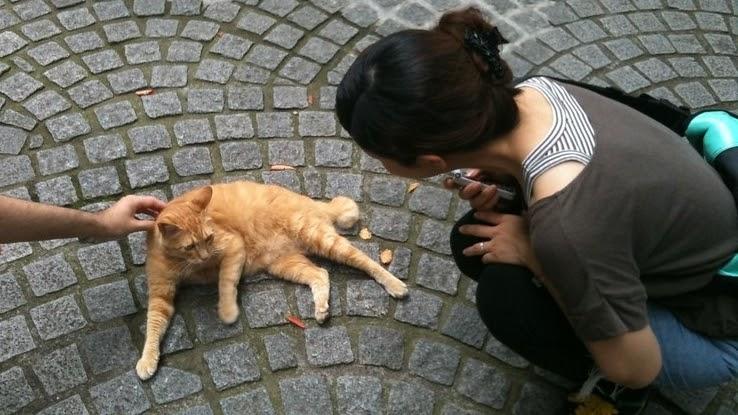
Of course, the cats still aren’t above begging. As the largest freshwater body in Japan, Lake Biwa draws many tourists even just from within Japan itself, and many of them are happy to share kitty treats or some of the fresh fish the area is famed for.
Sanagishima: Paradise For Cats
Sanagishima is one of several cat islands in the Inland Sea, the area between the three main islands of Honshu, Shikoku and Kyushu. This part of Japan is scattered with small island fishing settlements which help provide fresh seafood for the multitude of cats. The island is located off the coast of Kagawa, the smallest prefecture in Japan.
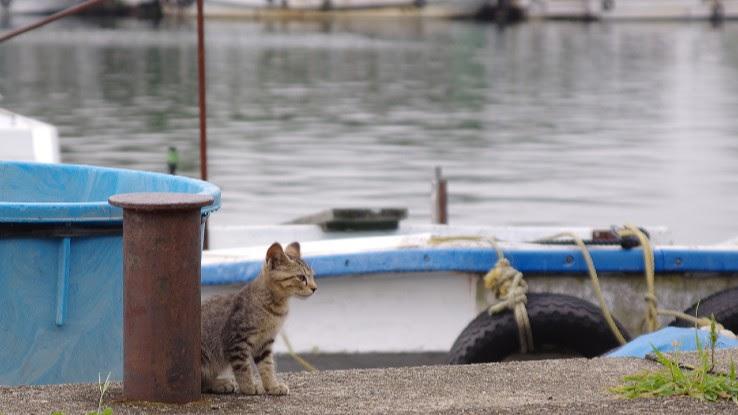
Due to this island’s location, it has a warm climate and only a small amount of rain. Sanagishima has become pretty much the perfect paradise for a giant cat population. These cats also love to beg tourists for food, so guard those goodies closely.
Muzukijima: Cats and Orange Groves
Muzukijima is in the southern part of Japan in the Ehime prefecture. While many cat islands have fishing villages, Muzukijima is unique because it’s covered all over with citrus groves rather than boats. This island is also known for Japan’s best oranges.
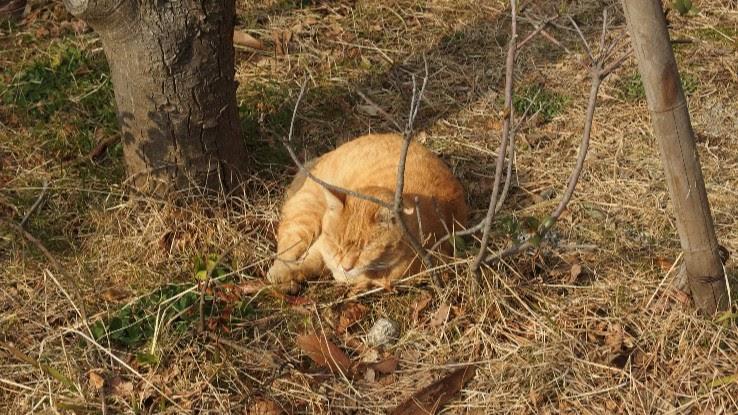
There are a substantial number of orange-colored cats that help continue the orange theme. These felines can be observed along a 15-kilometer sightseeing road that goes all around the island called the Muzuki Skyline.
Iwaishima: The Almost Nuclear Island
Back in 1982, the Japanese government chose Iwaishima as the location of a new nuclear plant. The people of the island, of course, were adamantly against the proposition. The strong public outcry caused the proposal to be rejected following the Fukushima nuclear disaster in 2011.
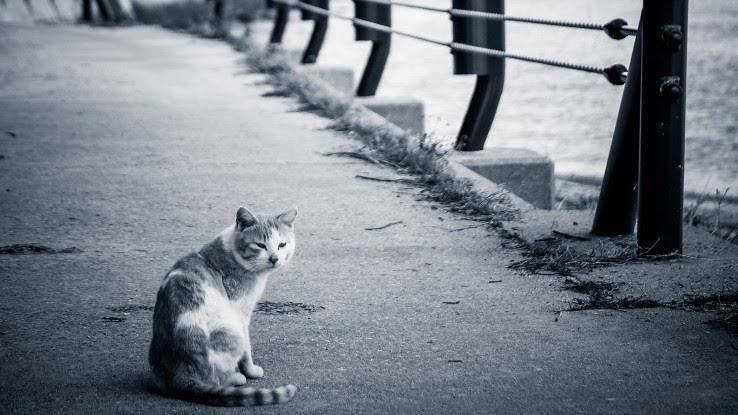
Iwaishima is the last island in the Seto Inland Sea. In addition to a fair number of cats, the island hosts a traditional boat parade festival called the Kanmai every year, so it’s a particularly good location for culture and maritime enthusiasts.
Aijima: Easiest Cat Island to Visit
Aijima is part of Fukuoka prefecture and lies in the Sea of Japan. It also happens to be one of the most accessible cat islands in Japan. The bullet train stops just a few minutes’ walk from the boat dock at Kokura Port. From there, busy travelers make their way across the water and enter kitty paradise.
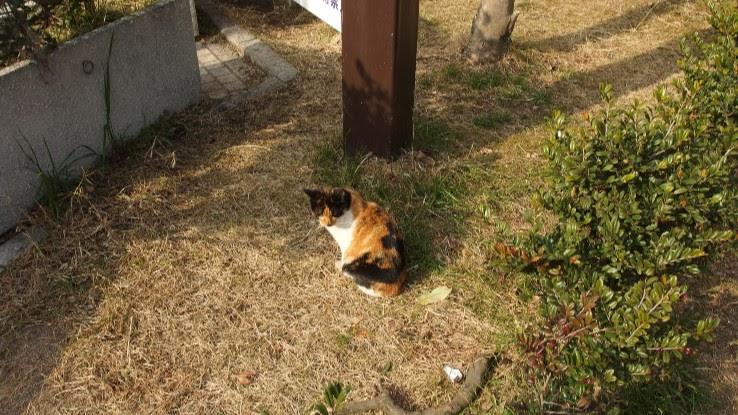
This is another island with a fishing industry background. The cats were brought to the island to take care of the mice. As of the last count, there were approximately 300 cat and human residents each.
Kadarashima: No Dogs Allowed
This cat island is bound up in the legend of a dog. Supposedly, one unfortunate mutt drew the wrath of the deity of the Kadarashima’s Yasakajina Shrine. As punishment, the dog and all its kind were driven from the island.
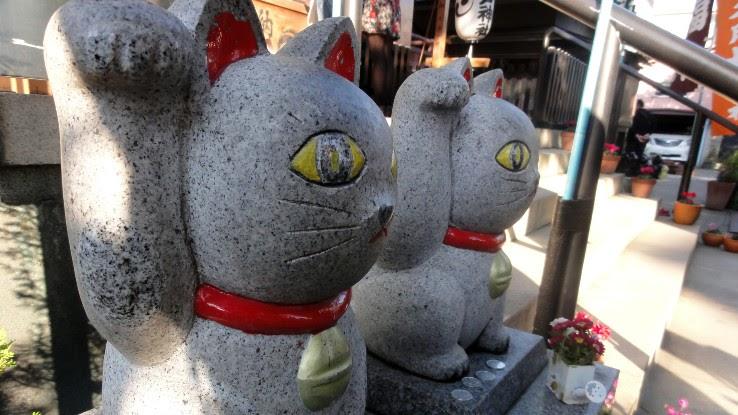
Whatever the reason, there have been no dogs on the island ever since, leading cats to roam freely. If you’re tired of your friends ragging on you for not being a dog person, this island could be a great escape.
Manabeshima: For Film Crews And Cats
About 19 miles off the coast of Japan’s main island of Honshu is an isolated island that’s preserved its beauty over the centuries. Because of the island’s unspoiled nature, film crews often venture there. However, they’re not the only ones who like it there: many tabbies also call the island home.
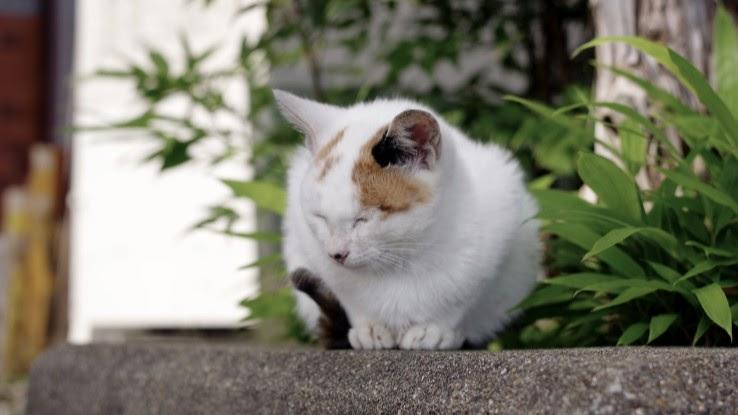
To get to Manabeshima, you’ll need to take a boat from Kasaoka. As of 2005, the human population of the island was only around 300, and like many cat islands, it’s only likely to lose people with time.
Genkaishima: The Once Devastated Cat Island
Genkaishima can be reached from the Hakata port of Fukuoka City, the largest city in the region and also the capital of Fukuoka Prefecture. That makes it a convenient destination for tourists looking for a quick cat excursion.
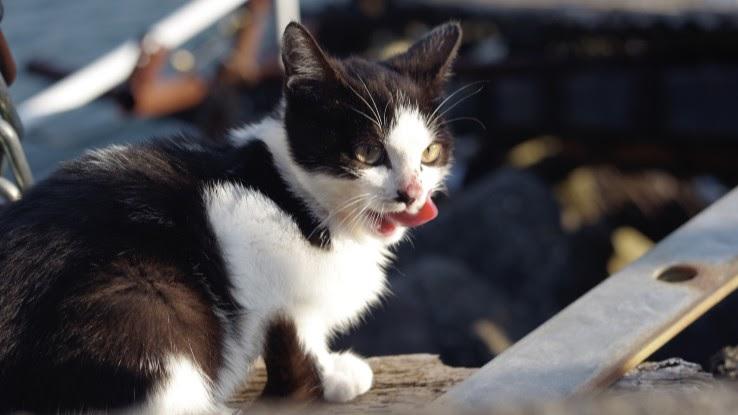
Until the island was hit by a devastating earthquake in 2005, the island was actually home to Japan’s largest cat colony. Although the numbers dropped at the time, the population is on the rise once again, so there are plenty of kitties for all.
Ogijima: Quaint Cat Island
Visitors to Ogijima will feel like they’ve stepped back in time. The village is composed almost entirely of wooden houses and is sparsely populated. Of course, one detail that might not be so historically accurate is the number of cats on the island.
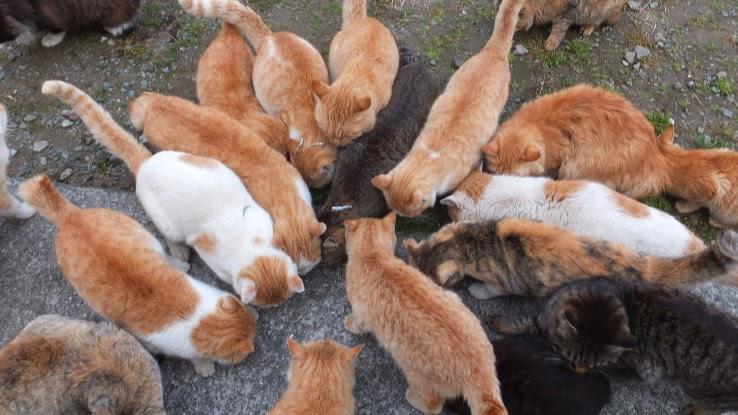
Toyotamahima Shrine, one of the main attractions on the island, is also a gathering place for many of the local stray cats. While this holy site isn’t dedicated to cats, they probably won’t mind — as long as you bring them a tasty treat. Unlike some cat islands, Ogijima also has multiple inns for visitors.
One Company Is Buying an Island and Making a Country for Cats
Perhaps the greatest example of Japan’s love for cats is the fact that one group of people called the Neco Republic is in the process of founding its own country for cats. They’re an animal welfare organization that operates a chain of rescue cat cafes across Japan.
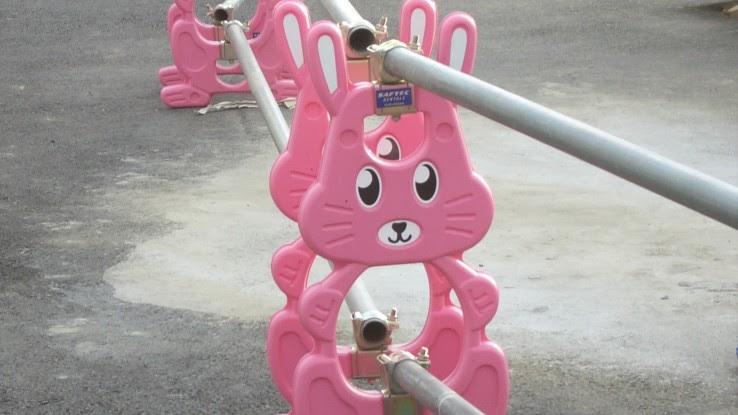
While the idea for a cat country began as a joke, public interest exploded in such a way that the organization is looking at raising funds to create an offshore sanctuary. Their goal is to eventually create a planned community where cats can receive proper care.
The Cats Boost Tourism
In case it wasn’t obvious already, the cats on these islands help boost tourism. Admittedly, some of the islands aren’t well-prepared for visitors, but others boast a range of historical and cultural sites, and the cats only draw in more people.
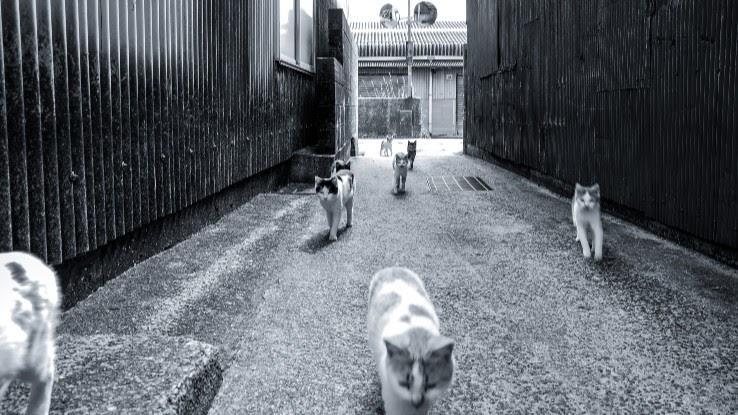
The tourists aren’t just Americans and Europeans, either. People from Japan love to visit them, too, and some of the inhabitants of these islands even have cats of their own. There’s a reason why cat cafes originated in Japan.
There Are Limits On Daily Visitors To Some Islands
Because some of the islands are not designed to support thousands — or even hundreds — of tourists descending upon these kitty paradises, there have been limits placed on the number of visitors per day some of them can have. Aoshima, for instance, has a limit of only 34 visitors each day.
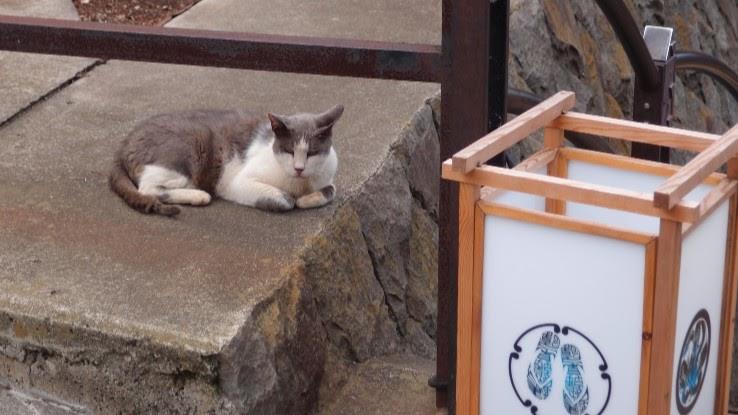
This is disappointing to tourists, of course, but it’s important to remember that most of the human residents of the island are elderly and cannot handle a large volume of tourists.
Please Feed The Cats!
While overcrowding on some islands has led to an obesity problem, even these fat cats often depend on tourists and residents to feed them. If you visit one of the cat islands of Japan, be sure to bring some snacks along that are safe to feed to cats.
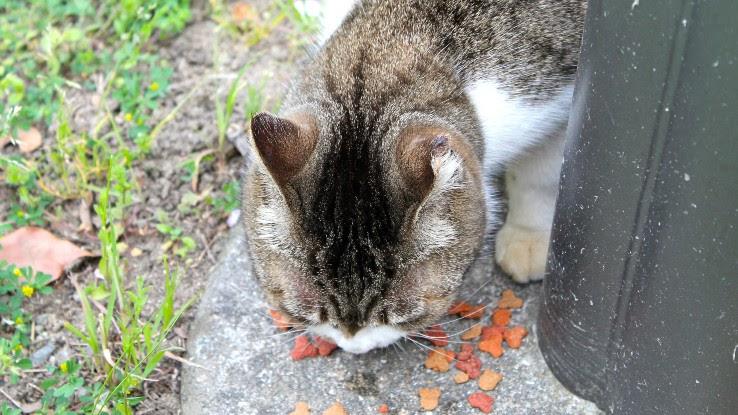
That doesn’t mean raw meat or poultry, though, as these can carry microbes that can make them sick. Instead, buy some cat food or cat treats. You should be careful to avoid feeding cats on roads and other dangerous areas, as that could inadvertently cause them to associate such spaces with food.
Not All Residents Love the Felines
While most of the residents adore the cats, not everyone is thrilled to share an island with potentially hundreds of felines. If you can think of all the cute things a cat can do, imagine all the trouble they can get up to, except magnified by a hundred or more. All at once.
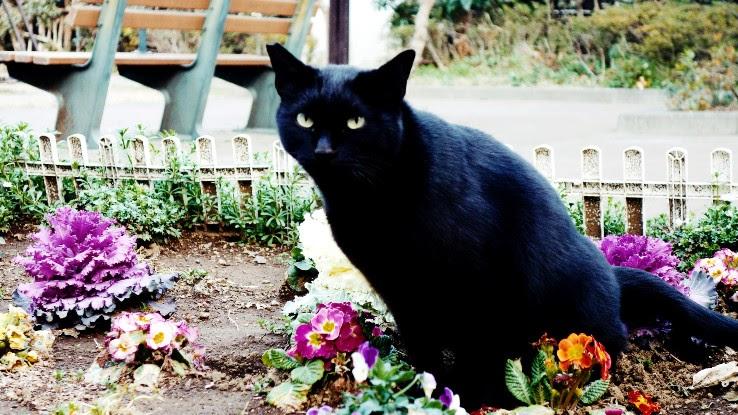
One problem that elderly residents have is trying to save their vegetable patches from so many fluffy intruders. Some residents have chased off cats in order to stop them from either digging up planted vegetables or marking their territory. Clearly, these folks aren’t the cats’ biggest fans.
The Cats Need Vets and Healthcare
While it’s easy to imagine how great it is to visit an island filled with cats, it’s easy to skip over the hardships that the cats face. Because of the explosive population growth on some islands, there are too many cats for local residents to care for.
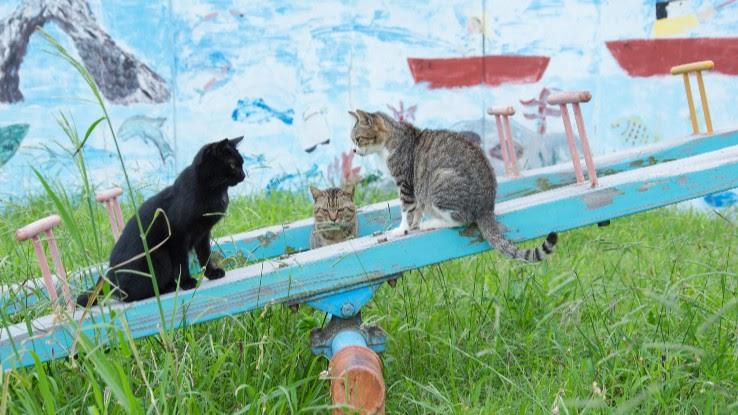
Without access to essential vaccines, some felines succumb to disease after only a few years of life. Another factor complicating the problem is that some residents don’t believe humans should intervene and that nature should run its course, despite humans being the reason the cats are there.
The Cats Love Fishing From the Islands
Cats are notoriously lazy, so they’re more than happy to live on the treats and cat food that humans lavish on them in homes and public places. But some kitties do also like to maintain some of their natural hunter instincts by catching fish.
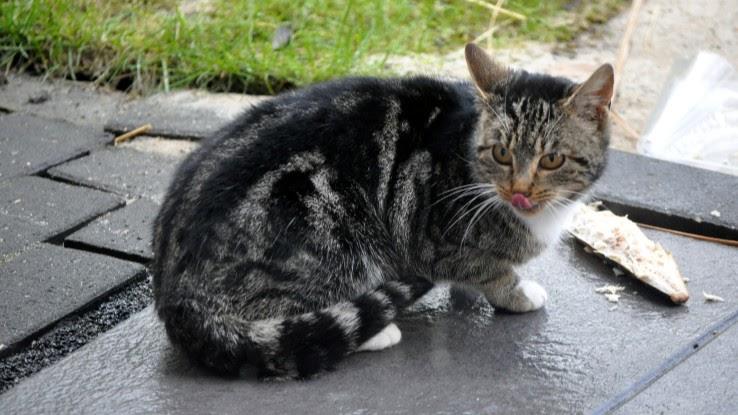
The waters around many of these islands teem with fish, so there are some happy cats hanging out at the boat docks and beaches. You’re quite likely to catch a glimpse of one of a feline running by with a fish in her mouth.
There Are No More Issues With Pesky Rodents
When you live on an island with at least as many cats as there are humans, the likelihood of rodent problems cropping up is pretty slim. Before they were brought over, many of these islands didn’t just have mice. They were infested.
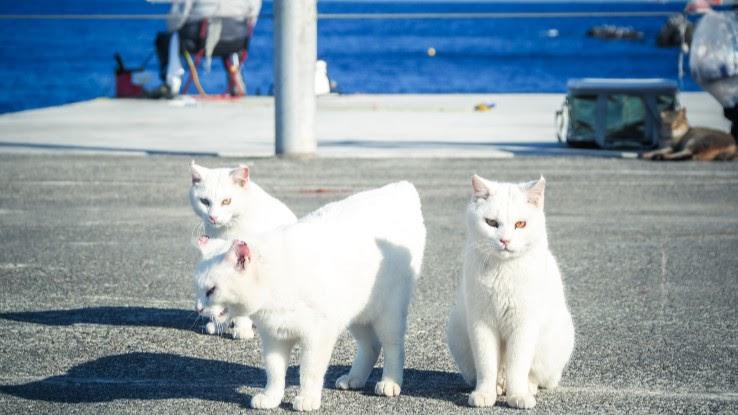
While overcrowded cat populations pose their own problems, it’s still better to live on an island of hundreds of cats instead of rats. And since there are no rodents left, folks who get squeamish around mice and similar critters will find these islands a purr-fect paradise. Just remember the treats.
Kawaii!
One of the reasons why the cat islands have become so popular is the concept of “kawaii” in Japanese culture — cuteness. In a country where even the roadblocks are adorable, it’s not that surprising that the public would be fascinated by cats and kittens.
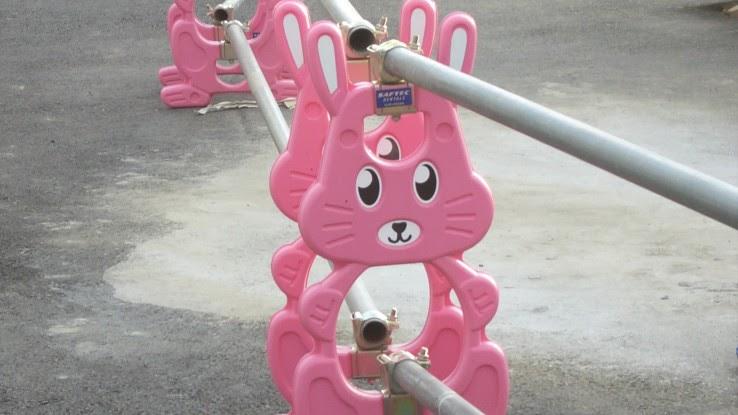
What’s cuter than a whole island of kitty-cats prowling around, mewing and looking up at you with soulful eyes? Giving them adorable jobs, of course. It’s become popular to make them lords of castles and managers of train stations to draw in tourists. No wonder these Neko-Shima are so popular.






